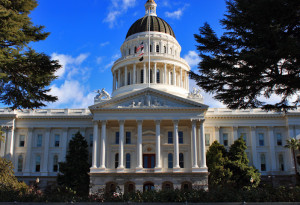Micheli Files
Now that the California Legislature has concluded its 2025 Session, and Governor Newsom is working through whether to sign or veto the bills that reached his Desk this year, I pose the question whether and how any vetoed bills are considered by legislators?
Micheli Files
What is the difference between a law’s “effective date” and its “operative date”? A common definition of “effective date” is when the new law is “on the books.” A common definition of “operative date” is when the new law becomes operative or is implemented (which commonly, but mistakenly, is described as when the new law is “in effect”).
Micheli Files
Did you know that the Assembly and Senate Daily Files actually list some rule suspensions (often referred to as “rule waivers”)? While the respective Daily Files contain calendars, tables of information, committee hearings, and legislative measures on the two Floors, they each contain one set of rule suspensions.
Micheli Files
The two Appropriations Committees in the California Legislature have a unique procedure they each use called the “Suspense File.” Basically, any bill which has been keyed “fiscal” by the Legislative Counsel is referred to the fiscal committee in each house, called the Appropriations Committee. The vast majority of those bills are placed on the Suspense
Micheli Files
The California Legislature has a combined 55 standing committees, with 32 in the Assembly and 23 in the Senate. In today’s Micheli Files lobbyist and law professor Chris Micheli breaks down the original bill referrals to policy committees during the 2025 Session (meaning the first committee that received a bill from the Rules Committee).
Micheli Files
With the final weeks of Session upon us, several procedural items that regularly occur on the Floors of the California Legislature may be in order.
Micheli Files
In today’s edition of the Micheli Files, intrepid McGeorge law professor and Capitol lobbyist Chris Micheli offers best practices for the use of letters to the Assembly and Senate Daily Journals.
Micheli Files
State mandates refer to state-imposed requirements on local governments and school districts that often involve new programs or higher levels of service. In this week’s Micheli Files McGeorge law professor and Capitol lobbyist Chris Micheli shares insights into some types of state mandates.
Micheli Files
With more and more lobby days taking place in the California State Capitol (and its Swing Space), law professor and lobbyist Chris Micheli is joined today in a special edition of the Micheli Files by Capitol schedulers Megan Garrison and Tisha Simpson to present a series of suggestions for conducting a successful lobby day.
Micheli Files
What are the recesses conducted by the California Legislature? And what is the purpose of Interim Study? There are actually joint recesses after both years of the 2-year Session.










